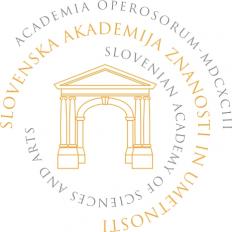Landscape diversity and hotspots of Slovenia
Principal Investigator at ZRC SAZU
Drago Perko, PhD-
Original Title
Pokrajinska raznolikost in vroče točke Slovenije
Project Team
Rok Ciglič, PhD, Mateja Ferk, PhD, Jerneja Fridl, PhD, Matjaž Geršič, PhD, Mauro Hrvatin, PhD, Drago Kladnik, PhD, Blaž Komac, PhD, Peter Kumer, Ph.D., Mateja Šmid Hribar, PhD-
Project ID
L6-6852 (B)
-
Duration
1 October 2014–28 February 2018 -
SICRIS
Povezava na SICRIS -
Financial Source
Javna agencija za raziskovalno dejavnost Republike Slovenije

Slovenska akademija znanosti in umetnosti

Partners
Univerza v Ljubljani, Filozofska fakulteta
Studies show that the most diverse areas in Europe are located in southern Scandinavia and on the margins of the Pyrenees and the Alps, where Slovenia also lies. Slovenia’s high landscape diversity occurs where different landscape types meet. Areas with the highest landscape diversity can be defined as landscape hotspots.
Based on digital landscape data, which are the most significant for the internal structure of Slovenian landscapes and at the same time their external appearance, a geographic information system, relatively objective methods, and field verification will be employed to define areas with high landscape diversity and to determine Slovenia’s landscape hotspots.
Landscape diversity will be determined in three ways: according to the 5 existing geographical typifications and regionalizations of Slovenia, according to the 5 existing classifications of relief, rocks, climate, soils, and vegetation of Slovenia; and according to the approximately 20 natural landscape elements of Slovenia.
They will be defined, analyzed, classified, and evaluated as natural spatial units that specifically affect the social components of the landscape and respond in a specific way to spatial development by society and require suitable protection.
Thematic maps of the landscape diversity and landscape hotspots of Slovenia will be created as a tool for future research in various disciplines; in geographical classifications, typification, and regionalization of Slovenia; in spatial management; in spatial and economical development; in natural disasters; and in the protection of Slovenia’s natural heritage, especially the preservation of Slovenia’s outstanding landscape diversity.
The program of the proposed project is based on three stages.
First year:
- review of the newest domestic and foreign literature,
- improvement of methodology and consolidation of terminology,
- preparation of the data layer for the relief of Slovenia in the geographic information system on the basis of the 25 x 25 m digital elevation model,
- preparation of the data layers of existing classifications (types, units) of landscape components (relief, lithology, soil, climate and vegetation) of Slovenia in the geographic information system,
- preparation of data layers of existing geographical typifications and regionalizations of Slovenia in the geographic information system,
- preparation of data layers of individual landscape elements (altitude, slope, permeability, precipitation etc.) in the geographic information system,
- determination of variability for each data layer,
- calculation of correlation between different maps of variability,
- establishing potential spatial laws according to correlation between data layers.
Second year:
- determination of landscape diversity and landscape hotspots by analyzing digital data layers of individual landscape elements (e.g. surface slope),
- determination of landscape diversity and landscape hotspots by analyzing the existing geographical typifications and regionalizations of Slovenia,
- determination of landscape diversity and landscape hotspots by analyzing the existing classifications (types, units) of landscape components (e.g. relief types, rock types),
- geographical definition, analysis and classification of landscape diversity and landscape hotspots of Slovenia,
- extraction of important landscape hotspots,
- analysis of human activities (settlement, agriculture, tourism and economy overall) in the selected landscape hotspots,
- field study of landscape diversity and landscape hotspots of Slovenia,
- publication of partial results.
Third year:
- continuation of field verification of landscape diversity and landscape hotspots of Slovenia,
- geographical evaluation of landscape diversity and landscape hotspots of Slovenia and evaluation of the selected landscape hotspots in relation to human activities (settlement, agriculture, tourism and economy overall),
- establishing different types of landscape hotspots,
- field studies of the significant types of landcspae hotspots,
- elaboration of a synthesis of the work performed and synthesizing the main findings,
- elaboration of thematic maps of variability and hotspots for all landscape elements,
- elaboration of complex thematic maps of landscape diversity and landscape hotspots,
- preparation of conclusions with proposals for further work,
- preparation of the supplemental text for the elaborat,
- preparation of material for scientific monograph.
- Perko, D., Ciglič, R., Zorn, M. 2020: Slovenia: a European landscape hotspot. The geography of Slovenia: small but diverse, World regional geography book series. Springer, Cham.
- Hrvatin, M., Perko, D. 2018: Morphometric types of landscape hotspots and coldspots in Slovenia. Geografski vestnik 90-2.
- Perko, D., Hrvatin, M., Ciglič, R. 2017: Determination of landscape hotspots of Slovenia. Acta geographica Slovenica 57-1.
- Perko, D., Ciglič, R. 2015: Slovenia as a European landscape hotspot. Acta Geobalcanica 1-2.
- Ciglič, R., Perko, D. 2013: Europe's landscape hotspots. Acta geographica Slovenica 53-1.